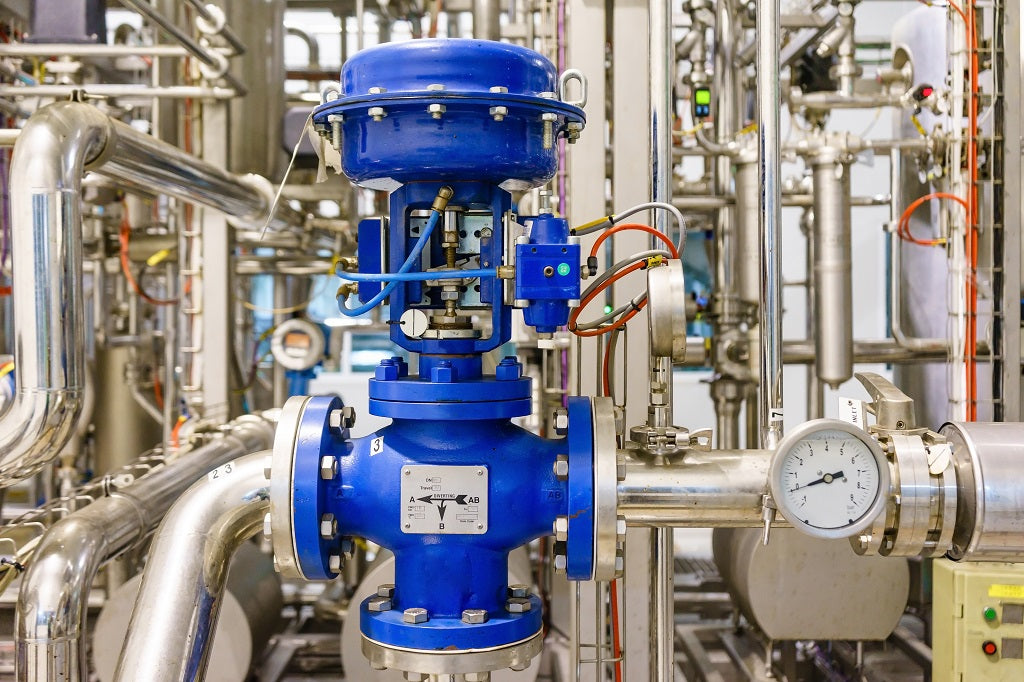How Control Valves Influence Energy Performance in Industrial Settings
How Control Valves Influence Energy Performance in Industrial Settings
Blog Article

Maximize Energy Savings and Convenience With Advanced Building Automation Controls
In the world of modern-day style and facility administration, the assimilation of sophisticated building automation manages stands as an essential advancement. By taking advantage of the power of automation, buildings can adjust, react, and advance in ways that were as soon as unbelievable.
Energy Efficiency Perks
Energy efficiency advantages can dramatically minimize energy consumption and operational prices in structures. Energy-efficient systems, such as advanced structure automation controls, can optimize the usage of resources like illumination, heating, and cooling, leading to reduced energy expenses over time.
Furthermore, boosted energy performance can extend the lifespan of structure devices and systems. By running a lot more efficiently, HVAC systems, lighting fixture, and various other building parts experience less wear and tear, resulting in decreased upkeep and substitute costs. Additionally, energy-efficient structures frequently command higher residential or commercial property worths and rental rates, offering long-lasting economic advantages to proprietors.
Furthermore, energy efficiency can improve occupant convenience and efficiency. Properly controlled indoor environments with optimal lights and thermal problems develop an even more helpful and pleasurable work area, leading to enhanced worker contentment and efficiency. Overall, the energy effectiveness advantages connected with sophisticated structure automation controls are diverse, including cost savings, ecological stewardship, and resident health.
Boosted Comfort Control
Enhancing convenience control in structure atmospheres requires an innovative combination of innovative automation systems for optimal occupant wellness. By making use of advanced building automation controls, facilities can customize the interior setting to meet the particular needs and preferences of occupants. These systems enable precise regulation of temperature, ventilation, and illumination, creating a efficient and comfy ambience. Occupant contentment and efficiency are carefully connected to thermal comfort, making it essential to have systems in position that can adapt to altering problems in real-time.
By including these innovative controls, structures can not only boost convenience however also enhance power performance by optimizing system procedures based on real occupancy and use patterns. Eventually, focusing on resident convenience via sophisticated automation systems leads to a much more pleasurable and healthier interior setting.
Functional Efficiency Improvements

In addition, the execution of real-time monitoring and Full Article analytics devices enables building drivers to determine energy inadequacies and operational anomalies immediately. By continually checking energy usage patterns and system efficiency metrics, adjustments can be made in real-time to maximize energy consumption and make certain peak functional effectiveness. control valves. In addition, incorporating demand response approaches into structure automation controls can additionally improve functional effectiveness by dynamically changing energy usage based on grid problems and prices signals
Indoor Climate Optimization
Efficient interior climate optimization is a fundamental facet of building automation controls, ensuring passengers' convenience and wellness while taking full advantage of energy financial savings. By utilizing sophisticated sensors and controls, developing automation systems can constantly readjust and keep track of temperature, moisture levels, air high quality, and air flow to create an ideal indoor environment. Preserving regular and comfortable conditions not just improves resident complete satisfaction but additionally enhances productivity and overall wellness.
Interior environment optimization additionally plays an essential role in power effectiveness. By fine-tuning cooling, air flow, and heating systems based on real-time data and tenancy patterns, developing automation controls can considerably lower power usage - control valves. For circumstances, carrying out strategies such as demand-controlled air flow and thermal zoning can help decrease energy waste while making certain that each over at this website location of the building receives the essential conditioning.

Sustainable Atmosphere Creation
Structure automation regulates not only maximize interior environment problems for energy performance and resident convenience however additionally lay the structure for producing a sustainable setting via tactical administration of sources and systems. By integrating innovative structure automation technologies, such as sensing units, actuators, and intelligent software program, centers can change and check energy usage in real-time to minimize waste and lower their carbon footprint. These systems allow predictive upkeep, determining potential problems prior to they rise and maximizing equipment my company performance to boost longevity and effectiveness.
Furthermore, lasting environment creation prolongs past power monitoring to encompass water preservation, waste reduction, and interior air quality improvement. Structure automation controls can control water use, discover leaks, and make certain appropriate garbage disposal techniques, adding to total sustainability initiatives. Furthermore, by managing and monitoring ventilation and purification systems, these technologies enhance occupant health and productivity while decreasing energy intake connected with a/c procedures.
Verdict
Finally, progressed building automation regulates deal substantial benefits in regards to power savings, comfort control, operational efficiency, interior climate optimization, and producing a lasting atmosphere. By carrying out these controls, buildings can achieve ideal efficiency while minimizing energy consumption and improving occupant comfort. It appears that making use of advanced automation modern technology is vital in improving building performance and creating a much more lasting future.
Energy efficiency advantages can substantially lower power usage and operational expenses in structures. Generally, the power efficiency advantages connected with innovative structure automation controls are multifaceted, including expense savings, environmental stewardship, and resident wellness.
Furthermore, including demand response methods right into structure automation controls can additionally enhance operational effectiveness by dynamically readjusting power usage based on grid conditions and prices signals.
Building automation regulates not only enhance interior environment conditions for power performance and passenger convenience but also lay the foundation for producing a sustainable environment with tactical management of systems and sources.In conclusion, advanced building automation manages offer substantial advantages in terms of energy savings, convenience control, operational effectiveness, indoor environment optimization, and developing a sustainable environment.
Report this page